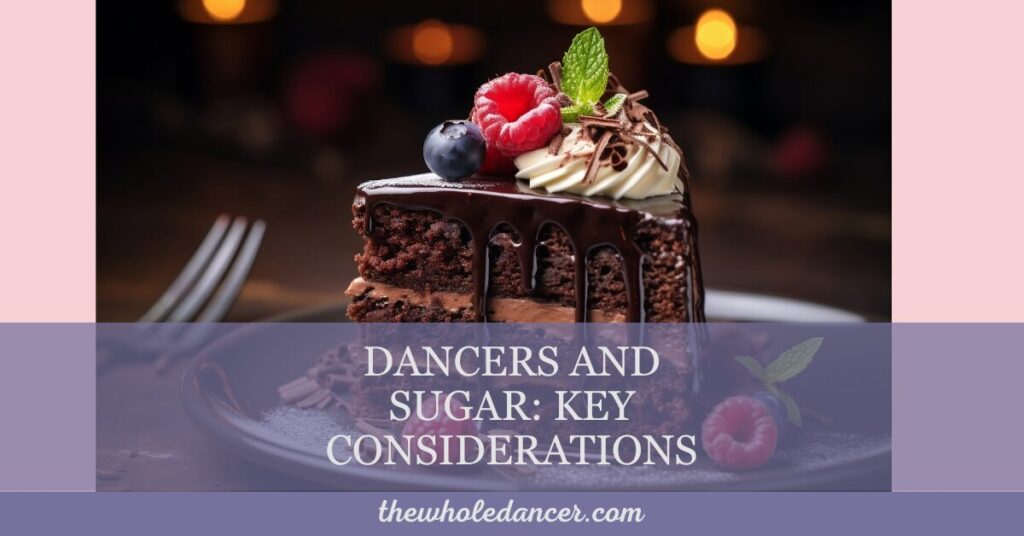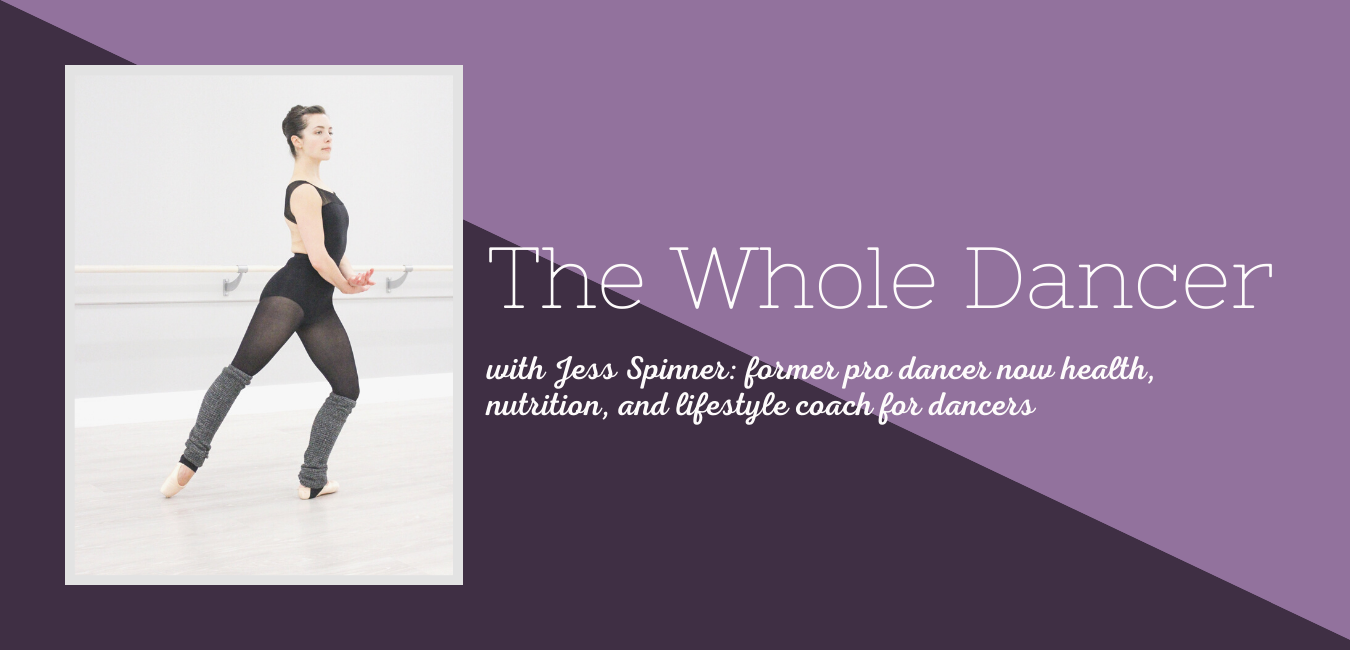
Can Dancers Have Their Cake and Eat It?
Every time I present something on food or eating plans, there are questions around sweets and foods you might categorize as “treats.” Most of us enjoy sugar and even that burst of energy it provides, so it’s understandable.
When you’re consuming processed or packaged food, it’s not a bad idea to consider the sugar. Don’t obsess, just build awareness. It’s essential to stay curious about your eating plan and habits so you’re able to pay attention to what’s making you feel energized, what’s draining you, food choices that make you feel great and those that don’t.
Can dancers go overboard with sugar?
Sure.
Sugar can, at times, be a slippery slope. You might find that as you eat more sugar, you want more sugar. When we eat sweet foods, the brain’s reward system — called the mesolimbic dopamine system — gets activated. The pleasure centers of your brain get “lit up” by sugar, and that response is dampened over time, meaning you need more of it to get the same effect.
As far as the research and questions of whether sugar is linked to adverse health consequences, it’s not easy to come to a firm conclusion. A lot of research surrounding sugar is “industry funded,” meaning food producers who sell products high in sugar are involved. This is part of why I recommend considering how sugar works for you.
Don’t get stuck on the concept of limiting sugar because studies show the limitations can in fact be a reason why you find you want more and more. Your goal should be to feel OK having some in order to discover what feels balanced.
You don’t want to fall into a perfectionist mindset around sugar, which can lead to orthorexic tendencies. “Orthorexia nervosa is a disordered eating pattern that is characterized by the need to eat ‘clean’ and ‘pure’ foods to the point that the individual becomes obsessed with this way of life.”
True balance with sugar is all about you.
You might find that a little something sweet each night is all you really need to be satisfied. Maybe that means enjoying something homemade so you can be part of the process. Or you might feel better and balanced by having one luscious piece of cake or some ice cream each week. Consider all the dairy-alternative ice cream options as a way to add variety to your eating plan.
The number one thing is to find a balance that is sustainable. It should not impact your energy throughout the day — if you’re eating gummy bears or peanut butter cups every hour, that is likely affecting your performance. Try to steer clear of using sugar as a pick-up for lagging energy. The goal should be consistent, not erratic, energy.
How to make the shift away from sugar reliance.
Your body runs on sugar as your body breaks down most carbohydrates into the sugar glucose. So you will definitely be including it in your eating plan. If you find you’re turning to more processed sugars, think about incorporating more fruit or sweet vegetables (e.g., sweet potatoes or carrots). This way, you’re “crowding out” those less-nutritive foods with whole food sources of sugar and still addressing your desire for sweet flavors. In a lot of cases, natural sugars are more satisfying, especially when compared to highly processed or artificial sweeteners.
As with any changes to the way you’re eating, it’s important that you make them gradually. So no sugar “detox.” Just consider where you are, make small adjustments, and notice any impact on your energy, dancing, and overall enjoyment of food. You might find you start to taste natural sugars more intensely.
Dancers and sugar: hidden sources…
While sugar is obvious in some foods like candy, cookies, cake, brownies, or ice cream, it’s less obvious in many other foods. Sugar is abundant in energy bars, packaged foods like breads and crackers, and even stereotypically savory snacks like chips.
A good rule of thumb is to read the ingredients list. Easy-to-grab convenience food is often the biggest source of excess sugars. When food companies create snacks, they try to put together the ideal combination of sugar, salt, and fat to make a food addictive and yet not very satisfying — that way, you keep coming back for more.
Other foods to stay mindful of…
Caffeine, dairy, and refined carbohydrates can have addictive qualities. If you find that you’re becoming dependent on any of those foods to pick up your energy, wake you up midday, or get you through a performance, it’s possible they’re not actually fueling your best dancing.
Slowly cut back or find a replacement and see how you feel. Keep in mind, if you cut something out altogether, it can result in you wanting it more. Finding personal balance with food isn’t always easy, but it is key to your dancing success. For support, sign up for a free coaching consultation call.
This post on dancers and sugar was revamped in October 2024.

What you say makes so much sense! Sugar isn’t automatically “the enemy”; it’s more about moderation, balance, and how one *consistently feels*. Thank you for this!
Exactly, Christina!! I’m so glad this resonated with you. Sugar isn’t inherently bad but a lot of dancers start to believe that which only leads to fear, restriction, and discomfort/guilt around those foods. You’ve got to connect with what feels right for you!